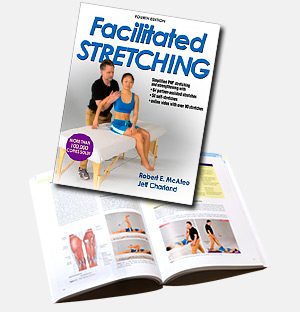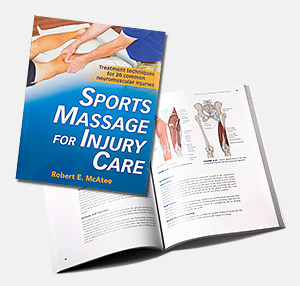It’s common for trail runners to experience low back pain from uphill running. This article addresses some of the reasons this occurs, and what you can do to prevent and/or alleviate the problem.
The biomechanics of running uphill are different than running on the flats. Running uphill, your stride length changes, your posture changes, and the physical demands on your muscles change. The steeper the hill, the more noticeable these changes become and the greater the likelihood that you’ll experience low back pain.
First of all, as you go from flat ground to uphill terrain, your stride length shortens. This causes your leg muscles, especially hamstrings, to work in a much shorter range than they’re used to, which may cause them to fatigue more easily. A shorter stride also means you’re taking more steps than you normally need to cover the same distance, which in turn, requires your muscles to work harder over the same distance.
Running uphill causes you to use your muscles differently. As we all know, even if you’re “in shape”, when you do something new, you tend to be sore from it later. When covering uphill terrain, as the ground rises in front of you, you must raise your leg higher in front of you before placing your foot back on the ground. This works the hip flexors and stretches the gluteal (buttocks) muscles more. The push-off phase of your stride also requires more force since you are going up as well as forward. This especially works the gluteal muscles, the hamstrings, and the calves.
Uphill running also causes postural changes, the most noticeable being an increased forward lean of the upper body. The steeper the terrain, the more you naturally lean forward. Stuart Dole, an avid runner for the past 30 years and also a massage therapist from Tomales, CA explains it this way: “you need to lean over to keep your center of gravity over the center of thrust.” This position puts added stress on your low back muscles, as they work harder to support you, “holding steady tension without any motion”, according to Dole.
The best course of action is to prevent this type of pain or soreness from occurring. Working hills into your training a little at a time will allow your body to adapt slowly, so that you may never experience any low back problems from running uphill. Gary Weston is a track and cross-country coach at Liberty High School in Colorado Springs, CO and a veteran distance runner. He’s completed 75 marathons since 1973 (PR 2:31) and won the Colorado State 50K in 1994 in a time of 3:32. He takes advantage of a large sand dune behind the high school, which he incorporates into the team training regimen. “It’s like being on a treadmill,” he says, “you work really hard without covering much ground. Plus you don’t have the impact you do on regular ground.”
Some form of strength training will also be beneficial. Coach Weston has designed a program for his athletes that includes weighted squats, step-ups (using a bench), and one-legged dips. He emphasizes that proper form is extremely important. Done improperly, these exercises can cause low back pain.
Stretching is important too. Weston says, “Sometimes tightness or soreness in the lower back could be the result of tight glutes or tight hamstrings pulling on that area.” So your flexibility program should include stretches for your hamstrings, glutes and quads, as well as your low back.
Stretching can also be used to obtain relief should you begin to experience low back pain. Massage can also be amazingly helpful. According to Weston, “I think a lot of people don’t properly stretch or take advantage of massage therapy. While I was doing the ultras and while I was doing my most competitive marathons, I would take advantage of massage once or twice a month and I think that helped tremendously.”
Here’s an easy self massage tip. Form a loose fist, and use your knuckles to dig into and knead the low back area. Pay special attention to the muscles that run up along either side of the spine (don’t massage right on the spine) and also right along the top edge of your hip bones, from the spine out to your sides. It’s also helpful to massage the glutes, hamstrings and quads. You can use a tennis ball as a massage tool or buy one of the many self massage tools now on the market.
There you have it. With proper training, to gradually increase your hill work, along with strengthening, stretching and massage, you should be able to prevent low back pain and keep on running those happy trails!
About the Author
Bob McAtee NCTMB, CSCS owns Pro-Active Massage Therapy in Colorado Springs, CO. His clientele includes Olympic and professional athletes, dancers, performers, and recreational athletes. A massage therapist since 1981, he was certified in sports massage in 1986 through the Sports Massage Training Institute, is a member of the AMTA National Sports Massage Team, is Nationally Certified in Therapeutic Massage and Bodywork (NCTMB), and is a certified strength and conditioning specialist (CSCS), through the National Strength and Conditioning Association. Feel free to contact him at (719) 475-1172 or stretchman@stretchman.com
©1997 by Robert E. McAtee
Originally published in Trail Times

